Rainwater harvesting – save money with these sustainable ideas
Use these rainwater harvesting ideas to help you save money and make your home and garden more sustainable
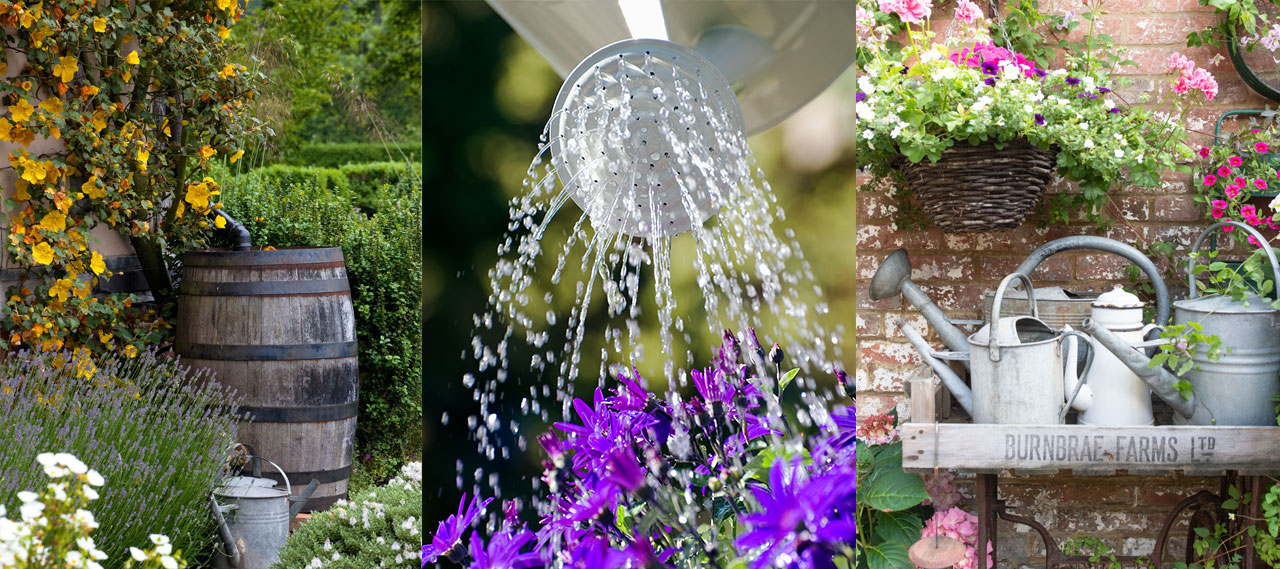

Sarah Warwick
Domestic rainwater harvesting is a growing trend – although it’s a long established water conservation measure. By collecting and re-using rainwater in your yard or inside your home, you can reduce your reliance on municipal or mains water and also help conserve energy.
Of course this is not the only way to make your home kinder to the planet, there are plenty of sustainable garden ideas and eco home improvements that will also make a big difference. However, rainwater harvesting and other water conservation methods offer a great place to start.
What is rainwater harvesting?
Rainwater harvesting is the process by which rainwater is collected and stored for re-use later on. The water could simply be used for irrigating the backyard. But it’s also possible to use it indoors for processes such as flushing the toilet and doing the laundry, or – in the most sophisticated systems – used all around the house including for drinking.
There are many advantages to rainwater harvesting. It’s a way of reducing reliance on municipal or mains water beyond fitting faucets, showers, toilets and appliances that use less water.
As well as responding to climate change by conserving water, it also has the benefit of reducing the stormwater run-off. Stormwater run-off can erode the banks of streams, spread pollutants and could cause local flooding.
Although whichever rainwater harvesting system you choose will have associated costs, the rain comes free, resulting in less annual expenditure for your household as well as a more eco-friendly home.
Rainwater harvest for the garden
When it comes to keeping the garden in great shape, rainwater suits most plants, and means you don’t have to use drinking quality water where it’s not required.
‘Nationally, outdoor water use accounts for 30 per cent of household use yet can be much higher in drier parts of the country and in more water-intensive landscapes,’ says the EPA. ‘For example, the arid west has some of the highest per capita residential water use because of landscape irrigation.’
Not only will these rainwater harvesting ideas help you save the planet but they will also save you money as they will reduce or remove the need to use fresh drinking water to irrigate your garden.
How much water can be collected?
When you’re planning a rainwater harvesting system, you’ll want to first find out what the rainfall levels are like where you live and therefore how much you might be able to collect.
Check the figures for your region via Current Results, which covers both the states of the US and the areas of the UK. After that, measure the ‘flat area’ of the roof (this is usually the same as the footprint of the house below), multiply by the annual rainfall and deduct 20 per cent for evaporation and overflow (multiply your result by 0.8 to make this deduction). The answer is the amount of potentially collectable rainwater each year.
1. Add a rain barrel to your garden

The most obvious way to collect rainwater for your garden is with a rain barrel or water butt. Simply attached to the end of your house’s drain pipes and they will quickly fill up with rainwater which you can use in the garden.
While we are all familiar with classic green or black plastic rain barrels, you might be surprised to know that these are not the only options. Today, there are myriad designs such as terracotta, galvanised metal and even some with integrated planters, that will seamlessly blend into your garden scheme.
Since these barrels generally store from around 50 to 100 gallons, this might not meet all your needs. Potential overflow and therefore waste could be another downside. On a positive note, they take up little space so are suitable for backyards of most sizes, making rainwater harvesting available to many.
‘Direct and indirect sunlight will act as a catalyst for algae growth in the cistern, so exposure to sunlight should be limited where possible,’ says the EPA in its report on Rainwater harvesting.
2. Wet and dry systems
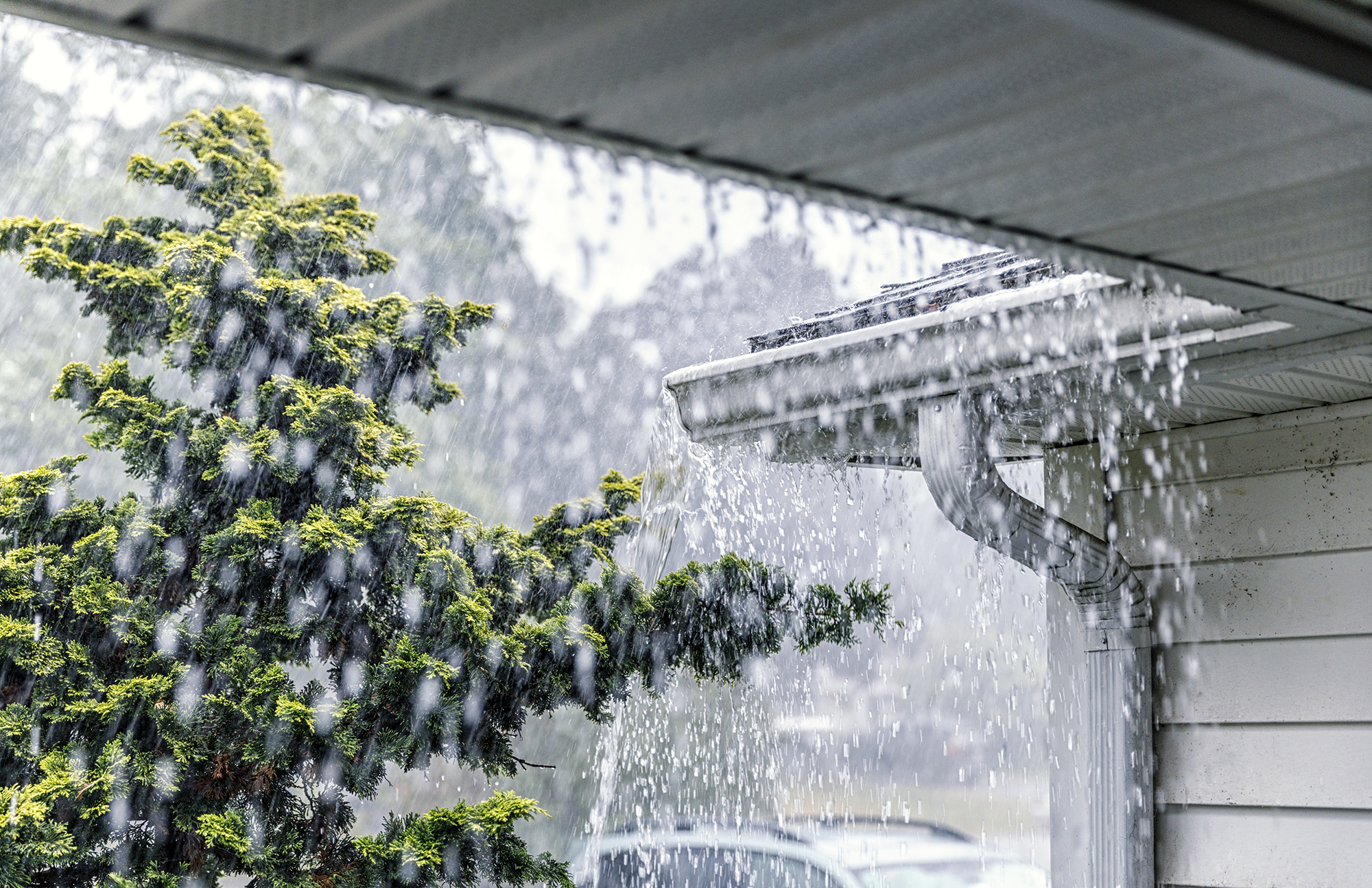
Like the idea of collecting more water than you can in a rain barrel? You can size up to a larger tank in what’s called a ‘dry’ system. The storage tank is still located beside the house, as with a rain barrel, but the storage capacity is much larger and it can cope with the volume of precipitation caused by storms.
More sophisticated is a ‘wet’ system. Here, downspouts from gutters around the house are connected to piping through which the water travels to a large tank. A system like this allows the whole collection surface to be used. Another plus point is that the tank can be located away from the house. It can be positioned above ground, but there’s also the potential to hide it underground. Tanks sited below ground also keep the stored water at a relatively constant temperature, inhibiting the growth of bacteria.
3. Rainwater harvesting for use indoors
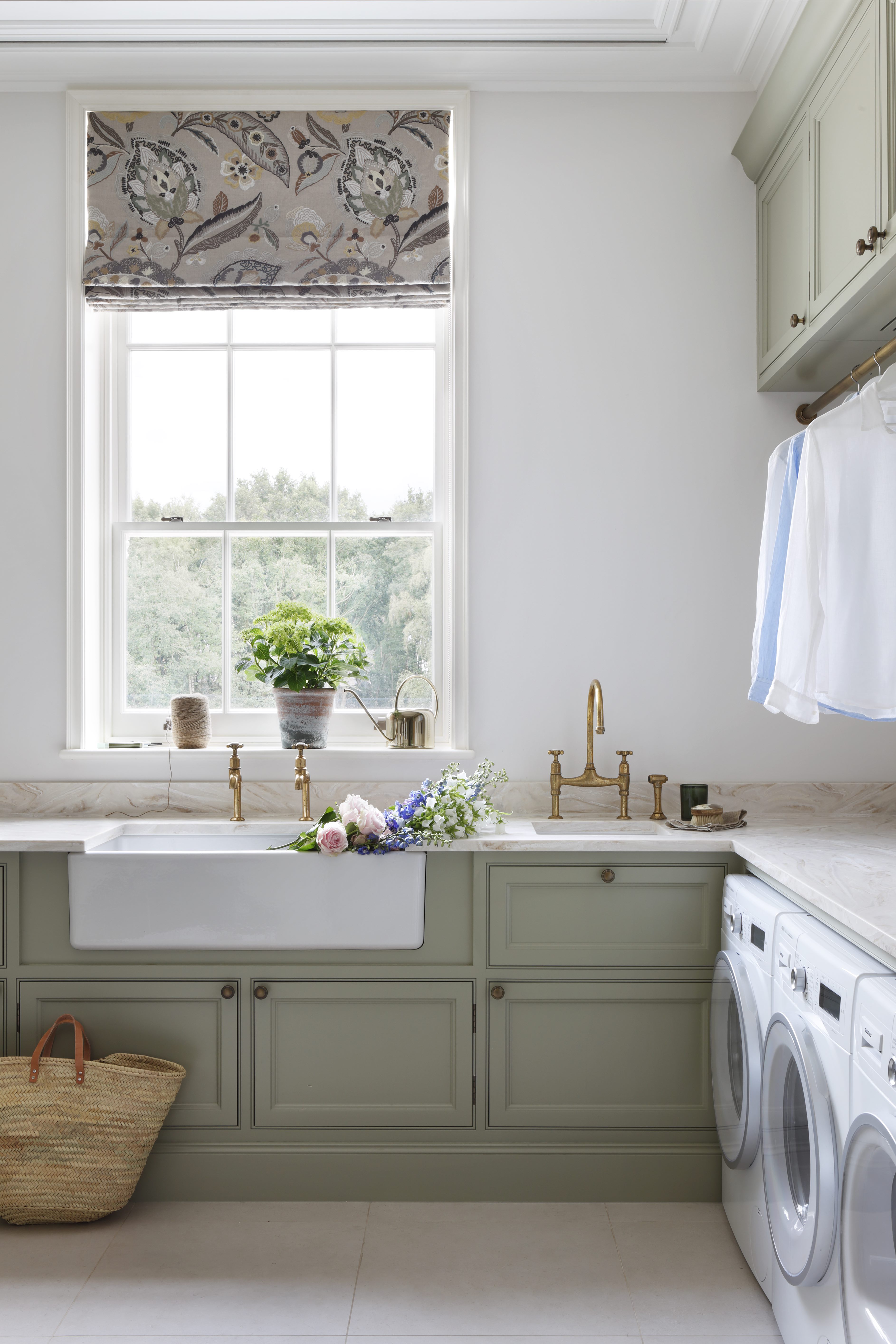
Inside a home, fixtures such as toilets and clothes washers don’t require potable water, that is water that’s suitable for drinking. For these needs harvested rainwater is an alternative, and using it instead conserves drinking water for situations when its use is essential. Rainwater harvesting is a great way to make your laundry room ideas more sustainable.
But it’s also feasible to use harvested rainwater to fulfil potable water needs, provided it is both filtered and disinfected. This therefore requires a more sophisticated whole-house harvesting set-up.
As well as the storage tank and pipes, a whole-house system includes pumps, filters, connectors and a control system. In the UK, mains water back-up is featured in the system, while in the US they ‘are often supported by municipal or private well water supplies as a back-up water source’, according to the EPA.
Rainwater harvesting intended for drinking should be tested so that any necessary filters to make it wholesome can be used in the system. Bacterial disinfection is also required and an ultraviolet filter or other treatment devices take care of this. The rainwater is also filtered on its way to the tank to remove coarse material like leaves.
Bear in mind that regular service and maintenance of the system is very important, and you should budget for this as well as the initial installation when you’re planning to get started with rainwater harvesting.
4. Reuse your graywater
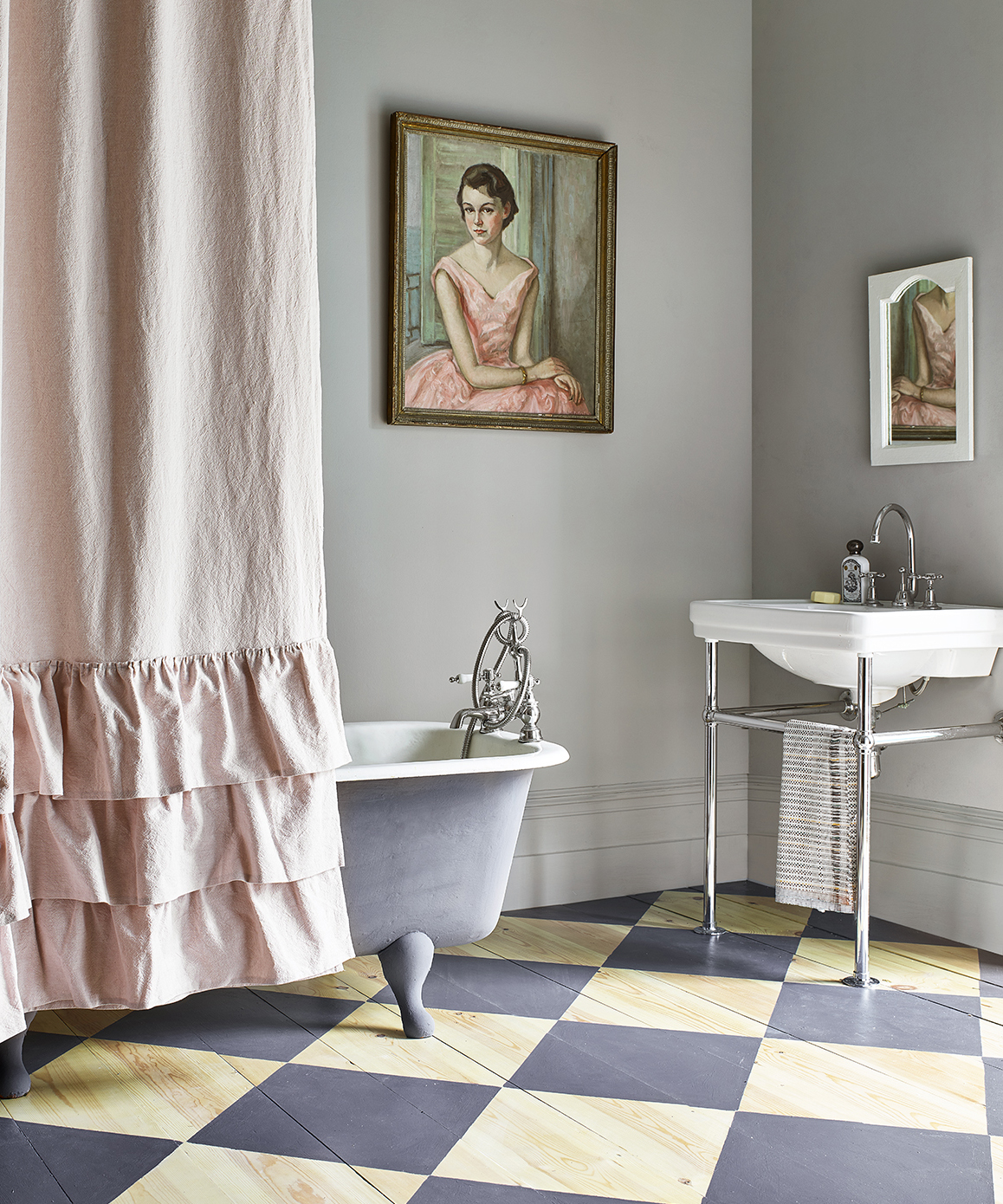
While it's not technically a method of rainwater harvesting, reusing graywater should not be overlooked as a method to conserve water and save money.
Do you know how much water your shower uses? According to Home Water Works, 'the average American shower uses approximately 15.8 gallons (59.8 liters) and lasts for 7.8 minutes.' In fact, a report from the EPA states that the average American uses 82 gallons of water a day at home – that’s a lot of waste water that could be reused.
‘Collect grey water and use it to water the garden,’ recommends Anni Noel Johnson, CEO at Sproutl. ‘This could be from the kitchen, the washing machine or baths, basins and showers. Don’t worry about household soaps and detergents as these are harmless to plants but water containing food waste, grease, bleach, disinfectants and dishwasher salt should be avoided.’
There are many ways to save grey water: from having a bucket with you in the shower and emptying your bath with a hose through to the water used for boiling vegetables or the water from half drunk water bottles or pet bowls. You can even pour your leftover cold coffee over acid-loving plants. When you go to pour water down your drain, think about whether it could actually go on your plants – chances are, it probably could.
5. Install an automatic graywater irrigation system
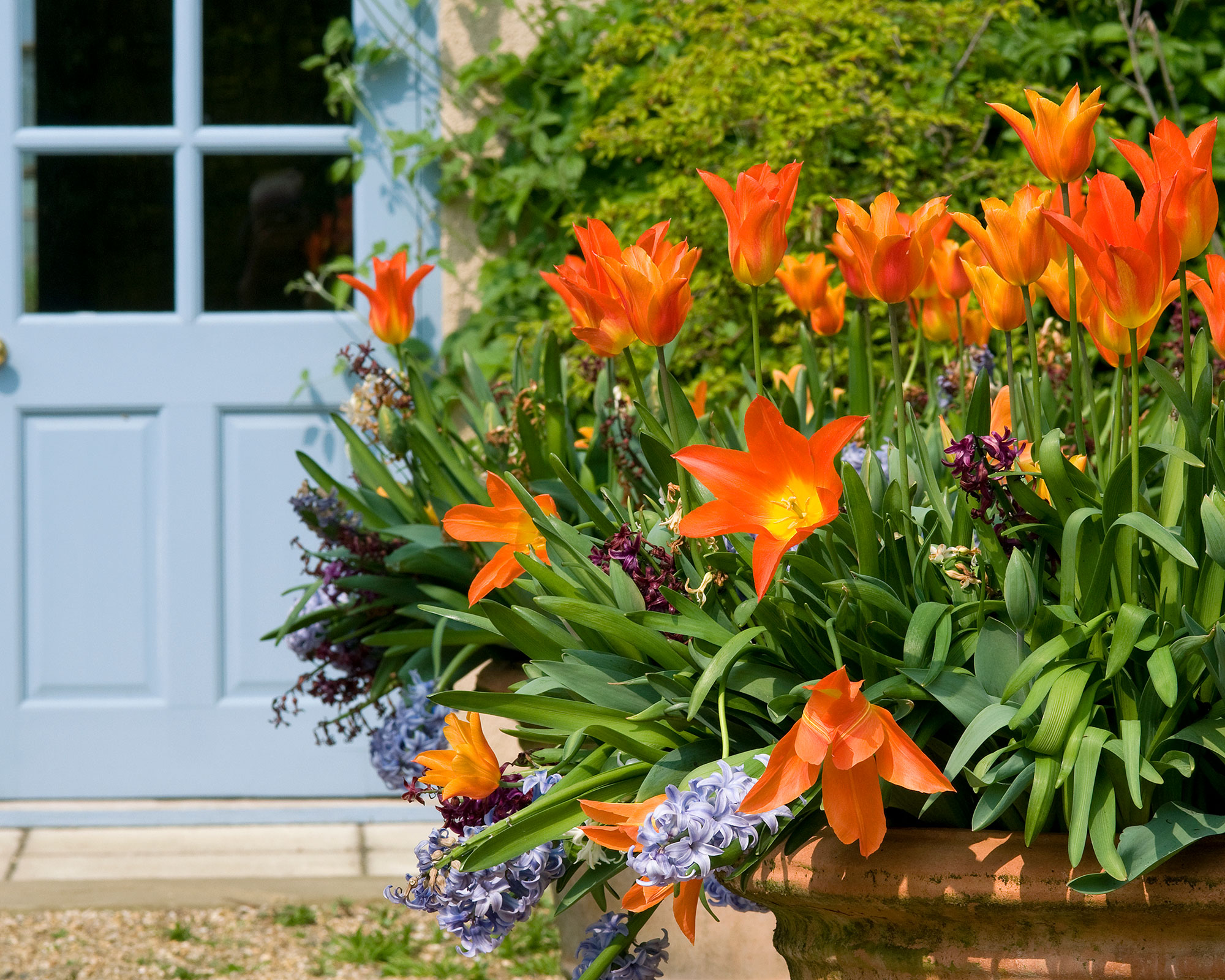
For a more permanent swap, consider a graywater irrigation system. This involves a diverter being added into your plumbing system, routing the water straight into the garden rather than down the drain. Ask your plumber to cut in a diverter valve. This enables you to decide which water goes into your garden – such as that from for showering – and which goes down your drain – water that has been used to clean the bath with bleach and chemicals.
Once the device is fitted you can then 'attach a hosepipe to the outlet value and use a hose gun to water your garden as you normally would. Alternatively use a soaker hose so the water can run through your plants, borders or lawn automatically,' explains Martin Scarborough owner of WaterTwo.
Unlike rainwater, grey water is best used immediately rather than stored, as stored grey water will require treatment. ‘It is also advised that the bath water is not used on anything that later on you are going to eat!’ adds Martin.
6. Ditch the hose
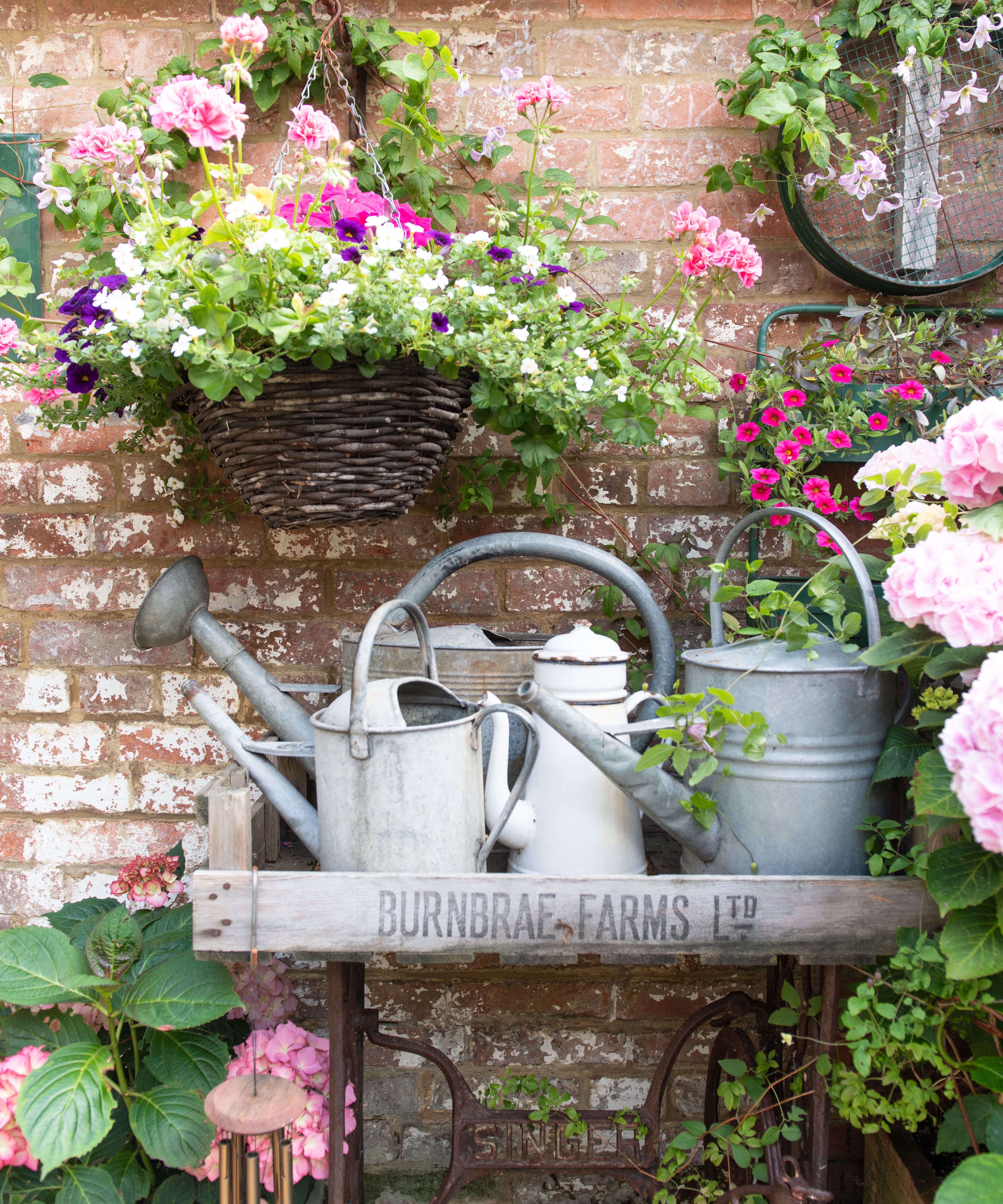
An easy swap that works well alongside other rainwater harvesting ideas, using a watering can, rather than a hosepipe connected to the mains, is a great way to save water when watering your flower bed ideas. Not only do you save the water that will drain away while you turn the hose on and off and go from plant to plant, but you are also able to have more control, focusing the water on the roots rather than dousing the leaves.
7. Use more mulch
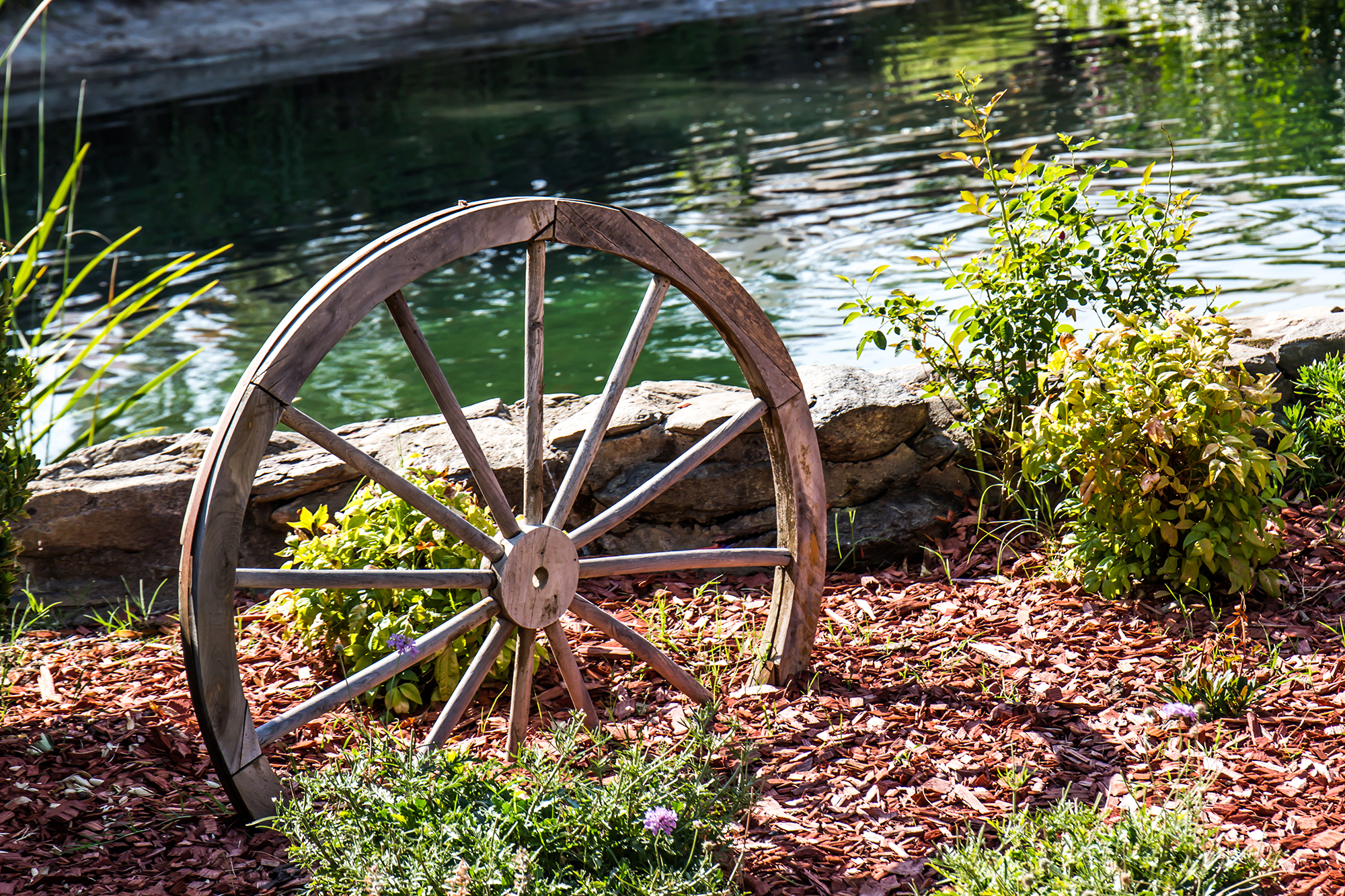
If you are already rainwater harvesting with a rain barrel and using a watering can, then it's probably time to consider some other methods to help you conserve water. It's generally acknowledged that watering your garden is a chore so anything that helps to reduce the need for excessive watering has to be a good thing.
Employing no dig gardening techniques, such as adding mulch and improving soil health will help to reduce the amount of watering needed. Adding a wood chip mulch around the base of your plants helps to reduce soil evaporation and therefore keeps the soil moist for longer.
8. Park the mower

Watering the lawn is one of the largest wastes of water in the country. 'If the average sized lawn in the United States is watered for 20 minutes every day for 7 days, it’s like running the shower constantly for 4 days or taking more than 800 showers. That's equivalent to the amount of water needed for the average family to take one year's worth of showers,' says experts in a report for the US Environmental Protection Agency.
Even if you are watering your lawn with water gathered from rainwater harvesting, it is still worth considering how to reduce the amount of water your lawn demands.
Reducing the amount you mow the lawn can help it to stay green during the hottest months of the year. Longer grass requires longer roots which can access water deeper in the soil, meaning you can also reduce the frequency with which you have to water your lawn.
Discover how often should you mow your lawn and how to fertilize a lawn to keep your grass in prime condition.
9. Add watering storing granules to your compost

A lesser known solution for keeping your plants well watered is water saving gel such as Miracle Water Storing Crystals, which can reduce your need for watering by up to 75 per cent. Easy to use, you simply add 2tbsp to 5 gallons of compost; the granules will last for two years before starting to biodegrade into the soil. Ideal for potted plants, which are the first to dry out in warm weather, the granules swell with water which they then gradually release into the soil as it dries out.
Water saving gel is particularly beneficial when planting in a hanging basket as even when you use the best plants for hanging baskets, they can still struggle to retain enough water during the summer months, even when there is rain.
10. Right plants, right place
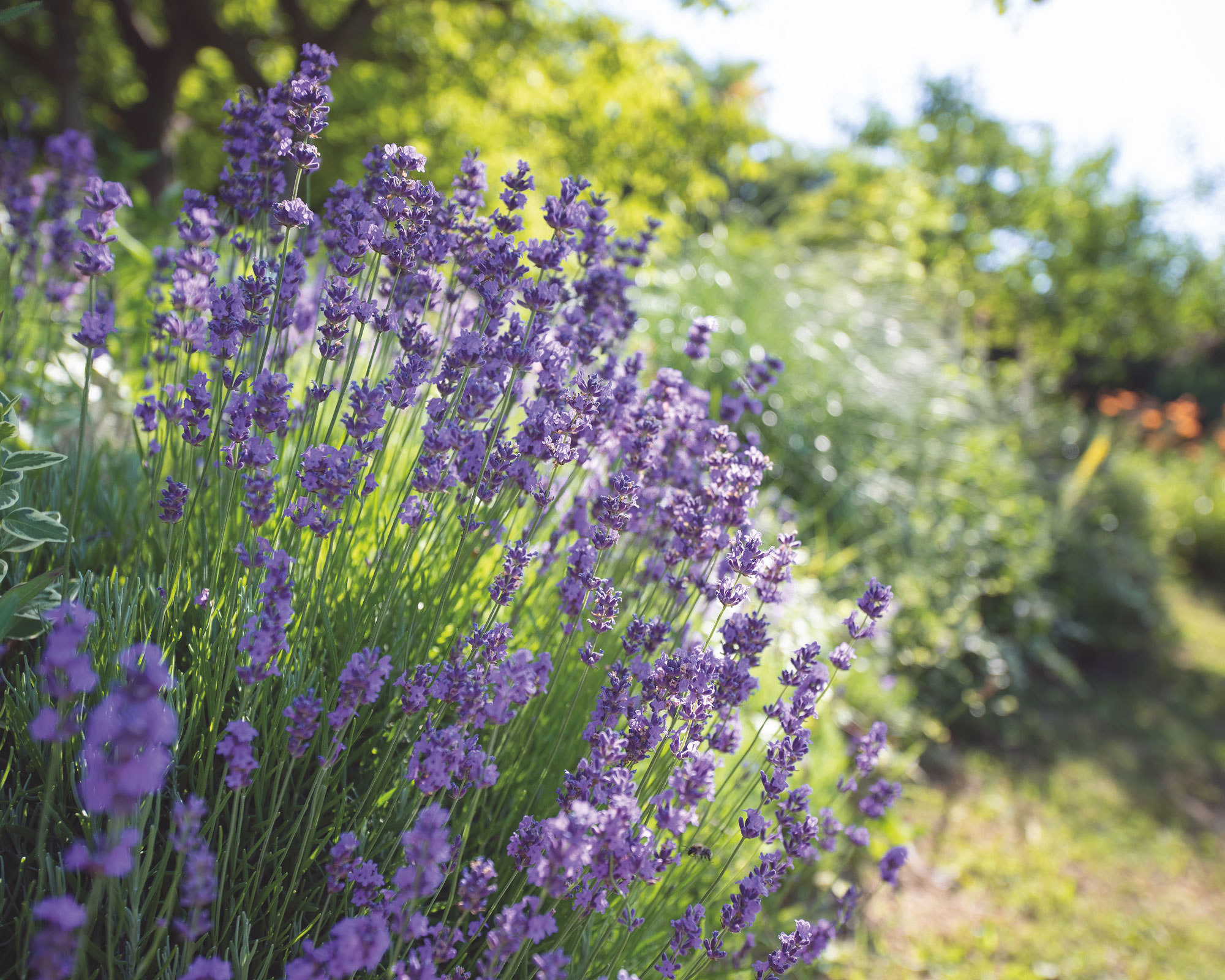
Opting for plants that are suited for drier climates, such as lavender, foxtail lilies, bearded iris, sedums and passion flowers, means they will not be as demanding on your water supplies. Of course, when adding a new plant to your garden it is important that you know how to care for it. When growing lavender, for example, make sure you've researched when to plant lavender and how to grow and care for lavender to ensure your new addition has the best start in life.
Vegetable patches are particularly water hungry, with plants like beans, beetroot, carrots and peppers all needing lots of water. Keep them to a concentrated area so you can prioritise your watering attention and reduce waste. Only use water acquired through rainwater harvesting techniques on your vegetable garden ideas as graywater should never be used on produce you are planning to consume.
Why should I harvest rainwater?
The extreme weather caused by climate change and population growth makes water shortages a pressing concern, so harvesting rainwater is an eco-conscious move. But it can additionally reduce the run-off of stormwater which benefits the environment, too. Garden plants will also appreciate non-treated water.
'The average American family uses over 300 gallons of water per day at home, according to the US Environmental Protection Agency (EPA). In the UK, meanwhile, the average household uses around 330 liters a day – that’s 140 liters per person per day, says the Environment Agency.
’If we do not increase water supply, reduce demand and cut down on wastage, many areas will face significant water deficits by 2050,’ said Emma Howard Boyd, chair of the Environment Agency, in the State of the Environment.
Can you collect rainwater for a garden?
Yes, you can collect rainwater for a garden. The easiest way is to attach a water butt on to the downpipes of your guttering, this will gather a large quantity of rain water which you can then use to water your garden. This is also known as rainwater harvesting.
What is the importance of rain water harvesting?
Even when done on a small scale, rainwater harvesting is an important method of water conservation, helping to reduce the amount of waste water and helping us to lead more environmentally friendly lifestyles. Rainwater harvesting is also important as it reduces the effects of drought and helps you to keep your garden looking verdant even during the hottest and driest months of the year.
Sign up to the Homes & Gardens newsletter
Design expertise in your inbox – from inspiring decorating ideas and beautiful celebrity homes to practical gardening advice and shopping round-ups.

Having graduated with a first class degree in English Literature, Holly started her career as a features writer and sub-editor at Period Living magazine, Homes & Gardens' sister title. Working on Period Living brought with it insight into the complexities of owning and caring for period homes, from interior decorating through to choosing the right windows and the challenges of extending. This has led to a passion for traditional interiors, particularly the country-look. Writing for the Homes & Gardens website as a content editor, alongside regular features for Period Living and Country Homes & Interiors magazines, has enabled her to broaden her writing to incorporate her interests in gardening, wildlife and nature.
- Sarah WarwickContributing Editor
-
 If your home's facade is riddled with cobwebs, this $12 tool makes cleaning once-unreachable spots simple and speedy
If your home's facade is riddled with cobwebs, this $12 tool makes cleaning once-unreachable spots simple and speedySay goodbye to cobwebs and hello to a fresh and clean facade
By Rebecca Shepherd
-
 I thought I hated gray, but this one paint changed my mind and now I use it all over my home
I thought I hated gray, but this one paint changed my mind and now I use it all over my homeWhy Farrow & Ball Pigeon defies everything I loathe about gray paint
By Sophia Pouget de St Victor